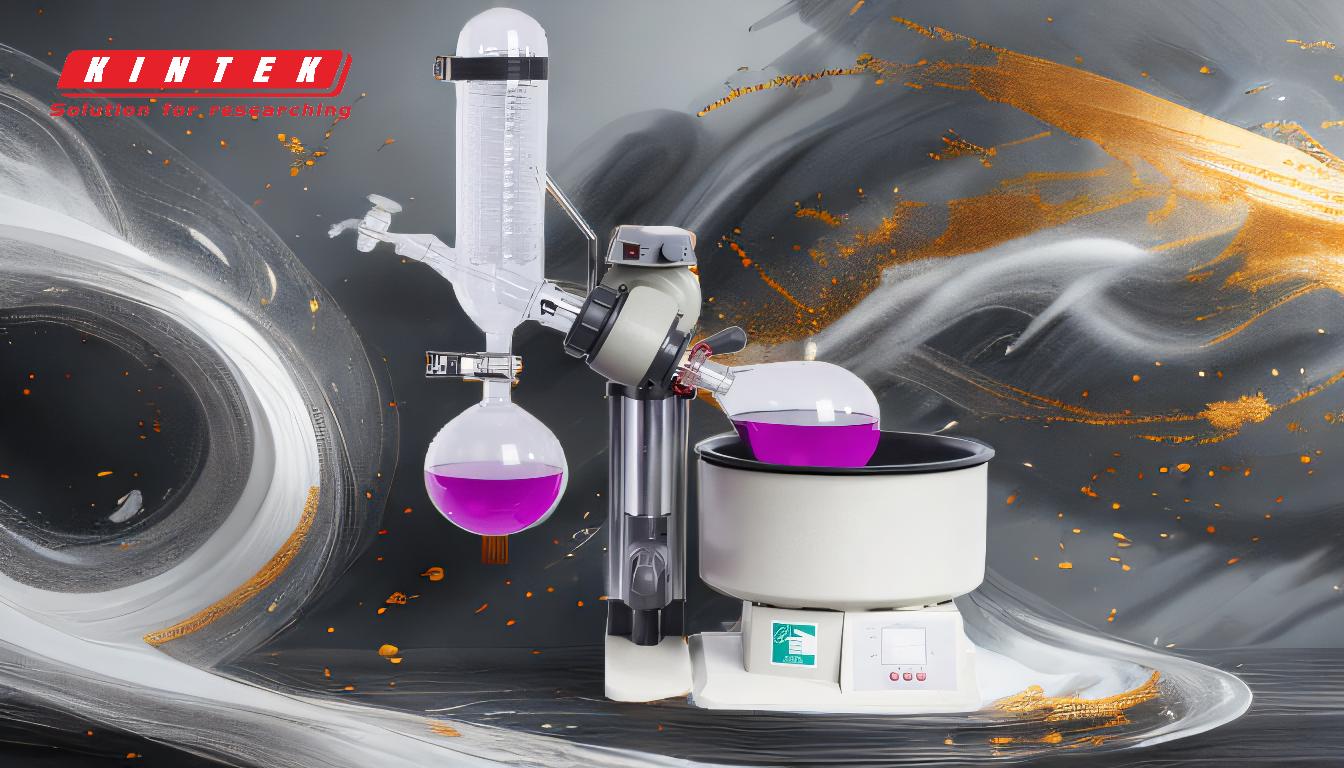The ideal temperature for a rotary evaporator depends on the solvent being used, the desired evaporation rate, and the need to avoid thermal decomposition or bumping. For most common lab solvents, a temperature range of 25-50°C is sufficient, with a water bath typically set at 30-40°C. Lower temperatures slow down evaporation but reduce the risk of bumping and thermal decomposition. Higher temperatures can speed up the process but may pose safety risks. Tools like a manometer and distillation nomograph can help optimize conditions. Balancing temperature, vacuum level, and cooling water temperature is key to efficient and safe rotary evaporation.
Key Points Explained:

-
General Temperature Range for Rotary Evaporation:
- For most common lab solvents, the ideal temperature range is 25-50°C.
- This range is sufficient to achieve efficient evaporation without causing excessive bumping or thermal decomposition.
- Lower temperatures (e.g., 25-30°C) are safer but may slow down the process, while higher temperatures (e.g., 40-50°C) speed up evaporation but increase risks.
-
Water Bath Temperature:
- The water bath is typically set at 30-40°C.
- This range balances evaporation speed and safety, preventing thermal decomposition of sensitive compounds.
- Lower water bath temperatures are particularly useful for heat-sensitive materials.
-
Vapor Temperature:
- During rotary evaporation, the vapor temperature (e.g., ethanol vapor) is typically 15-20°C.
- This lower temperature helps condense the vapor efficiently and prevents overheating of the solvent.
-
Factors Influencing Evaporation Rate:
- Water Bath Temperature: Higher temperatures increase the evaporation rate but may risk bumping or decomposition.
- Vacuum Level: A higher vacuum (lower pressure) lowers the boiling point of the solvent, enabling faster evaporation at lower temperatures.
- Cooling Water Temperature: Lower cooling water temperatures improve condensation efficiency, which is critical for maintaining a steady evaporation rate.
- Rotation Speed: Faster rotation increases the surface area of the solvent, enhancing evaporation.
-
Safety Considerations:
- Higher temperatures (e.g., 60°C) can speed up distillation but may pose safety risks, such as solvent bumping or thermal degradation.
- Silicone oil, often used as a heating medium, can become difficult to clean at higher temperatures.
- Lowering the vacuum value is recommended to achieve faster distillation while maintaining safety.
-
Tools for Optimization:
- Manometer: Measures the vacuum level, helping to fine-tune the pressure for optimal evaporation.
- Distillation Nomograph: A tool to estimate the boiling point of solvents under reduced pressure, aiding in temperature selection.
-
Practical Recommendations:
- Start with a lower temperature (e.g., 30°C) and gradually increase if necessary, monitoring for bumping or decomposition.
- Use a low-vacuum pump or sink aspirator for most common solvents, as these are sufficient for achieving the required vacuum levels.
- Adjust the rotation speed to ensure a thin, even film of solvent on the flask walls, maximizing evaporation efficiency.
By carefully balancing these factors, you can achieve efficient and safe rotary evaporation tailored to your specific solvent and application.
Summary Table:
| Parameter | Ideal Range/Value | Key Considerations |
|---|---|---|
| General Temperature Range | 25-50°C | Balances evaporation efficiency and safety, avoiding bumping or decomposition. |
| Water Bath Temperature | 30-40°C | Prevents thermal decomposition of sensitive compounds. |
| Vapor Temperature | 15-20°C | Ensures efficient condensation and prevents overheating. |
| Vacuum Level | Adjusted based on solvent | Lower pressure reduces boiling points, enabling faster evaporation at lower temps. |
| Cooling Water Temperature | Lower is better | Improves condensation efficiency for steady evaporation rates. |
| Rotation Speed | Faster increases evaporation | Enhances surface area exposure for efficient solvent removal. |
| Safety Considerations | Avoid >60°C | Higher temps risk bumping, thermal degradation, and cleaning challenges. |
| Tools for Optimization | Manometer, Distillation Nomograph | Helps fine-tune vacuum levels and estimate boiling points under reduced pressure. |
Need help optimizing your rotary evaporation process? Contact our experts today for tailored solutions!











